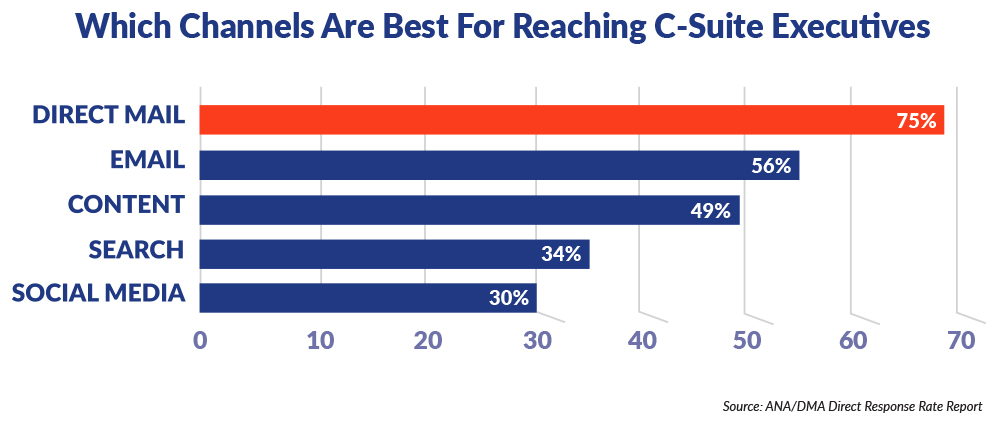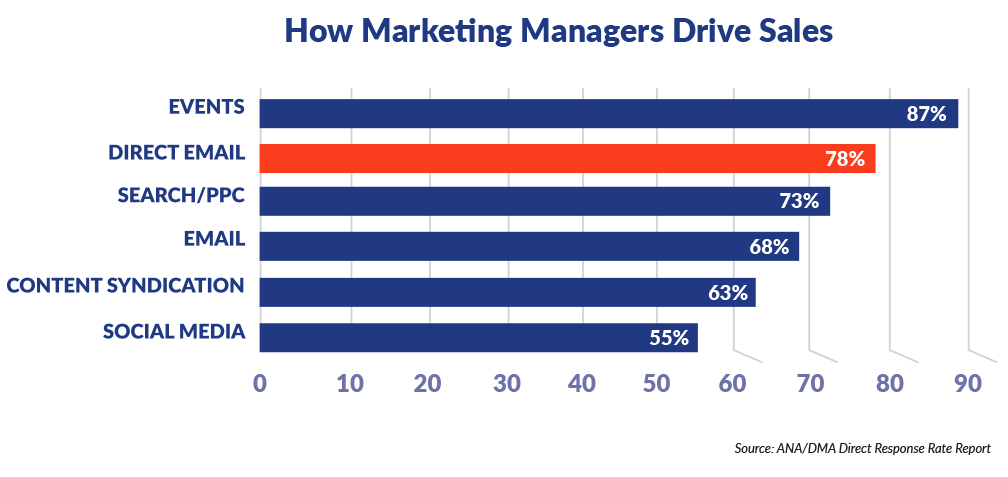How can we help you?
We want to hear from you. And it’s easy to reach us. Give us a shout at 844-886-2252, send us an email at hello@mediumgiant.co, visit our contact page, or fill out the form right here. You can expect a response within two business days.
What are you looking for?
Why tactile marketing can improve your digital ROI
The internet creates 2.5 quintillion bytes of data every day, reports Forbes. (For reference, a quintillion is a million trillions, or a one with 30 zeros behind it.) Your emails, videos, and social media posts compete with mountains of content — and only the most engaging and enlightening gains traction with consumers.
Digital marketers must work harder than ever to convert prospects into customers, so those marketers are turning to a tried-and-true tactic to supplement their digital strategies: tactile marketing.
One of the hottest trends in digital marketing isn’t a digital tactic at all.
Because tactile marketing — something touchable such as direct mail or branded swag — creates a tangible connection between brand and consumer in ways that digital experiences cannot, it has been gaining popularity among B2C and B2B marketers over the past few years.
“We respond to the tactile in deep and often unfathomable ways,” writes Paul Talbot on Forbes.com. “This is one of the reasons why offline direct marketing can often outstrip an online counterpart.”
A 2019 neurophysiological research study from Temple University’s Center for Neural Decisions proves that consumer response to tactile marketing is more effective than digital in several key areas.
An omnichannel strategy that includes both digital and tactile tactics maximizes marketing’s effect on consumer decision-making.
Direct mail is making a comeback — and marketers are taking notice.
Two decades after being pronounced dead, direct mail is thriving like never before, reestablishing itself as a powerful sales generator.
Response and conversion rates are higher than ever. From 2015 to 2016, direct mail response rates increased by 43%, according to the Data & Marketing Association, and they have continued to rise since. ROI also is on the upswing: For every dollar spent on direct mail, $29 in revenue is generated, reports the DMA. That’s more than double the return on investment from five years ago.
Ironically, direct mail can credit much of its revival to the growth of digital marketing. As marketers shifted dollars into digital, direct mail experienced a much-needed right-sizing. While inboxes overflowed with email, mailboxes saw a marked reduction in clutter.
Today, according to the USPS, the average American household receives just 454 pieces of marketing mail per year. That’s 8.7 marketing pieces a week — or a little more than one per day.
All of this has led to a renewed interest in direct mail: The ANA/DMA Response Rate Report shows that eight out of 10 marketers plan to maintain or increase their usage of direct mail.
Today, B2C marketing managers rank direct mail as their second most effective tactic for driving sales.
B2B marketers rank direct mail the best tactic for reaching coveted C-suite audiences.

According to an April 2020 article by Business.com, marketers who use direct mail as a component of their digital campaigns find that overall cost per acquisition is significantly reduced. This new hybrid funnel uses targeted direct mail in conjunction with social media, digital display, email, and landing pages to generate leads.
Direct mail marketers have embraced a digital strategy.
Over the past two decades, direct mail marketers have embraced an omnichannel strategy that integrates digital and nondigital tactics.
They’ve found that direct mail response rates are 28% higher when combined with a digital tactic. That’s supported by the 2019 Multichannel Marketing Report’s benchmark study on multichannel marketing that found that marketers who use seven or more channels generate much higher response rates among all channels.
Digital marketers are beginning to embrace tactile marketing.
Forward-thinking marketers have recognized the need to get past the online clutter by using direct mail to support their digital strategies. Creating message synergy between screen and tactile experiences can help them reach consumers in ways digital marketing alone can’t.
If you’re interested in setting up an affordable test to prove the effectiveness of direct mail within your digital marketing strategy, Medium Giant can help.
Why tactile marketing can improve your digital ROI
The internet creates 2.5 quintillion bytes of data every day, reports Forbes. (For reference, a quintillion is a million trillions, or a one with 30 zeros behind it.) Your emails, videos, and social media posts compete with mountains of content — and only the most engaging and enlightening gains traction with consumers.
Digital marketers must work harder than ever to convert prospects into customers, so those marketers are turning to a tried-and-true tactic to supplement their digital strategies: tactile marketing.
One of the hottest trends in digital marketing isn’t a digital tactic at all.
Because tactile marketing — something touchable such as direct mail or branded swag — creates a tangible connection between brand and consumer in ways that digital experiences cannot, it has been gaining popularity among B2C and B2B marketers over the past few years.
“We respond to the tactile in deep and often unfathomable ways,” writes Paul Talbot on Forbes.com. “This is one of the reasons why offline direct marketing can often outstrip an online counterpart.”
A 2019 neurophysiological research study from Temple University’s Center for Neural Decisions proves that consumer response to tactile marketing is more effective than digital in several key areas.
An omnichannel strategy that includes both digital and tactile tactics maximizes marketing’s effect on consumer decision-making.
Direct mail is making a comeback — and marketers are taking notice.
Two decades after being pronounced dead, direct mail is thriving like never before, reestablishing itself as a powerful sales generator.
Response and conversion rates are higher than ever. From 2015 to 2016, direct mail response rates increased by 43%, according to the Data & Marketing Association, and they have continued to rise since. ROI also is on the upswing: For every dollar spent on direct mail, $29 in revenue is generated, reports the DMA. That’s more than double the return on investment from five years ago.
Ironically, direct mail can credit much of its revival to the growth of digital marketing. As marketers shifted dollars into digital, direct mail experienced a much-needed right-sizing. While inboxes overflowed with email, mailboxes saw a marked reduction in clutter.
Today, according to the USPS, the average American household receives just 454 pieces of marketing mail per year. That’s 8.7 marketing pieces a week — or a little more than one per day.
All of this has led to a renewed interest in direct mail: The ANA/DMA Response Rate Report shows that eight out of 10 marketers plan to maintain or increase their usage of direct mail.
Today, B2C marketing managers rank direct mail as their second most effective tactic for driving sales.
B2B marketers rank direct mail the best tactic for reaching coveted C-suite audiences.

According to an April 2020 article by Business.com, marketers who use direct mail as a component of their digital campaigns find that overall cost per acquisition is significantly reduced. This new hybrid funnel uses targeted direct mail in conjunction with social media, digital display, email, and landing pages to generate leads.
Direct mail marketers have embraced a digital strategy.
Over the past two decades, direct mail marketers have embraced an omnichannel strategy that integrates digital and nondigital tactics.
They’ve found that direct mail response rates are 28% higher when combined with a digital tactic. That’s supported by the 2019 Multichannel Marketing Report’s benchmark study on multichannel marketing that found that marketers who use seven or more channels generate much higher response rates among all channels.
Digital marketers are beginning to embrace tactile marketing.
Forward-thinking marketers have recognized the need to get past the online clutter by using direct mail to support their digital strategies. Creating message synergy between screen and tactile experiences can help them reach consumers in ways digital marketing alone can’t.
If you’re interested in setting up an affordable test to prove the effectiveness of direct mail within your digital marketing strategy, Medium Giant can help.






